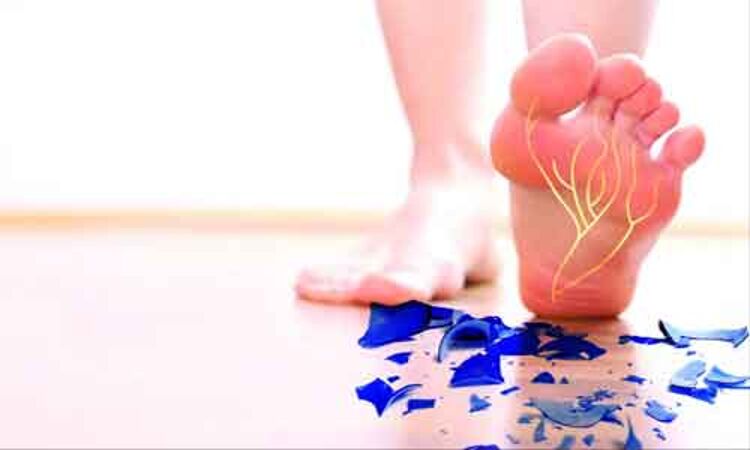- Home
- Medical news & Guidelines
- Anesthesiology
- Cardiology and CTVS
- Critical Care
- Dentistry
- Dermatology
- Diabetes and Endocrinology
- ENT
- Gastroenterology
- Medicine
- Nephrology
- Neurology
- Obstretics-Gynaecology
- Oncology
- Ophthalmology
- Orthopaedics
- Pediatrics-Neonatology
- Psychiatry
- Pulmonology
- Radiology
- Surgery
- Urology
- Laboratory Medicine
- Diet
- Nursing
- Paramedical
- Physiotherapy
- Health news
- Fact Check
- Bone Health Fact Check
- Brain Health Fact Check
- Cancer Related Fact Check
- Child Care Fact Check
- Dental and oral health fact check
- Diabetes and metabolic health fact check
- Diet and Nutrition Fact Check
- Eye and ENT Care Fact Check
- Fitness fact check
- Gut health fact check
- Heart health fact check
- Kidney health fact check
- Medical education fact check
- Men's health fact check
- Respiratory fact check
- Skin and hair care fact check
- Vaccine and Immunization fact check
- Women's health fact check
- AYUSH
- State News
- Andaman and Nicobar Islands
- Andhra Pradesh
- Arunachal Pradesh
- Assam
- Bihar
- Chandigarh
- Chattisgarh
- Dadra and Nagar Haveli
- Daman and Diu
- Delhi
- Goa
- Gujarat
- Haryana
- Himachal Pradesh
- Jammu & Kashmir
- Jharkhand
- Karnataka
- Kerala
- Ladakh
- Lakshadweep
- Madhya Pradesh
- Maharashtra
- Manipur
- Meghalaya
- Mizoram
- Nagaland
- Odisha
- Puducherry
- Punjab
- Rajasthan
- Sikkim
- Tamil Nadu
- Telangana
- Tripura
- Uttar Pradesh
- Uttrakhand
- West Bengal
- Medical Education
- Industry
Spinal cord stimulation effective option for treating painful diabetic neuropathy: Study

Researchers have found that spinal cord stimulation (SCS) when applied at a low frequency of 10 KHZ can be effective for treating patients suffering from painful diabetic neuropathy (DN).
The study will be presented at the 19th Annual Pain Medicine Meeting, a meeting of the American Society of Regional Anesthesia and Pain Medicine which will be held from Nov. 20 to 22 virtually due to the current COVID-19 pandemic.
Presently, the Center for Disease Control and Prevention (CDC) estimates that there are 34.1 and 88.0 million adults in the US living with diabetes and prediabetes, respectively. Out of the current number, approximately 20% of patients with diabetes will develop painful diabetic neuropathy (PDN).
Diabetic neuropathy is a debilitating, progressive chronic pain condition that significantly impacts patients' health-related quality of life (HRQoL). Neither pharmacological treatments nor low-frequency spinal cord stimulation (SCS) has provided significant, long-term pain relief for PDN patients. Hence, the present study was conducted in which the preliminary observational data suggested that 10 kHz SCS may relieve pain and improve sensory deficits from peripheral polyneuropathy.
A total of 216 PDN subjects was assigned 1:1 to 10 kHz SCS (Nevro Corp.) combined with conventional medical management (CMM) or CMM alone. Patients with clinical diagnosis of PDN with symptoms ≥12 months, average lower limb pain intensity ≥5 cm and appropriate candidate for SCS were included in the study while those with hemoglobin A1c >10%, daily opioid dosage >120 mg morphine equivalents and average upper limb pain intensity ≥3 cm were excluded, describes Erika Petersen M.D., from the University of Arkansas for Medical Sciences in Fayetteville.
The primary endpoint compared responder and safety rates between the treatment groups at 3 months. Secondary endpoints included neurological function, HRQoL, sleep quality, patient satisfaction, and cost-effectiveness data. A 24-month patient follow- up was planned to analyze the results.
The key findings noted were-
- Significant difference was observed between the treatment groups in the proportion of subjects who met the primary endpoint.
- Analysis of the per-protocol population demonstrated differences in lower limb pain scores, responder rates, and Investigator-assessed sensory improvements at 3-month follow-up.
- Similar differences between the treatment groups were observed across several HRQoL and functional measures, including the impact of pain on sleep and Global Impression of Change.
Based on the findings, the authors concluded that "the SENZA-PDN study is the largest RCT to-date of SCS management of PDN patients and will help inform the place of 10 kHz SCS in the PDN treatment continuum. The primary endpoint was met with a significant proportion of subjects responding to 10 kHz SCS. These early results are encouraging for PDN patients who are refractory to conventional care."
However, data collection is ongoing with planned analyses for healthcare-related costs and long-term clinical utility, they further added.
Dr. Nandita Mohan is a practicing pediatric dentist with more than 5 years of clinical work experience. Along with this, she is equally interested in keeping herself up to date about the latest developments in the field of medicine and dentistry which is the driving force for her to be in association with Medical Dialogues. She also has her name attached with many publications; both national and international. She has pursued her BDS from Rajiv Gandhi University of Health Sciences, Bangalore and later went to enter her dream specialty (MDS) in the Department of Pedodontics and Preventive Dentistry from Pt. B.D. Sharma University of Health Sciences. Through all the years of experience, her core interest in learning something new has never stopped. She can be contacted at editorial@medicaldialogues.in. Contact no. 011-43720751
Dr Kamal Kant Kohli-MBBS, DTCD- a chest specialist with more than 30 years of practice and a flair for writing clinical articles, Dr Kamal Kant Kohli joined Medical Dialogues as a Chief Editor of Medical News. Besides writing articles, as an editor, he proofreads and verifies all the medical content published on Medical Dialogues including those coming from journals, studies,medical conferences,guidelines etc. Email: drkohli@medicaldialogues.in. Contact no. 011-43720751


